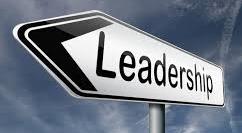situational Leadership:Maximize Potentials and Achieve Greater Results
Situational Leadership is a leadership theory developed by Paul heresy, and Ken Blanchard.
The theory states that instead of using one style, successful leaders should change their leadership style based on maturity of the people they are leading. That is, leaders should adjust their style to fit the development levels of the followers he is trying to influence.
This post is designed to give you greater understanding on situational leadership and how it can be applicable in you leadership journey. You will maximize the potentials of your followers and achieve greater results.

Oprah Winfrey was asked in an interview, how she chose her talk shows and relates with her staff, her guest and the audience and she said this words " She chooses her talk show on what is true to her heart, her values, what she stands for and how it the show can help and develop people's life's. All her decisions and how she relates with people begins with her purpose.
In other to be an effective situational leader, your purpose and what you stand for, must be firmly rooted in your heart. When that happens, you becomes easy to follow. Without words your followers can easily anticipate your expectations and the expectations of the organization. Like a popular saying, action speaks louder than words.
Situational Leadership is a leader’s ability to adjust his style to deal with the situations in his organization and to fit the development level of the followers in other to direct them towards a common goal.
To do this effectively a leader must understand that every employee in the organizations are not on the same level of maturity.
Someone on his first day on the job will acknowledge only the leader’s position, while someone in whom he has invested in, will respond in an intimate way. Therefore his expectations towards his followers differ. Let us discuss the various levels of Situational Leadership
Levels Of Situational Leadership
Level 1- position level
This is the lowest level of leadership development. It is the initial stage of every leader’s life. In this leadership, people follow you because they have to; positional leadership has to do with the rights granted by the position.
When a person lacks necessary skills and knowledge on leadership, he or she uses his position or authority to manipulating people to follow. The followers will only do what they are required to do and in most cases they won’t make sacrifice or go the extra mile for you.
Level 2 - Permission level
It is a leadership based on relationships; here people follow you because they want to. When you like people and treat them like individuals who have value, you begin to develop influence with them.
They trust you and the working environment becomes more fun and exciting. Here the leader gets to know his people and figure out how to get along with them, and the followers getting to know their leaders. You cannot truly lead people without truly liking them.
Level 3 - Production
In this leadership position, people follow you based on what you have done for the organization, based on your achievement to the organization or company.
A leader don’t only create an exciting environment, he initiates the change and produce results. The leader becomes the agent of change; he solves problems which takes the followers to another level of effectiveness.
Level 4 - People Development
Leaders becomes great not because of their power, but because of their ability to empower others. Leaders use their position, relationship and productivity to invest in their followers and develop them until those followers become leaders.
If your followers are not equal to the vision of the organization, they will find it difficult to get to their goal. In this level, the leader’s relationship with people deepens and it helps them know themselves better which strengthens team work and loyalty. Leaders become changers of life.
Level 5-pinnacle
This is the highest level of leadership development. It's a level of leadership were people follow you for who you are and what you represent. Here you have trained and raised leaders that the people see you as their role model, a leader.
Here you don’t need to declare you’re in number five, people declare it for you. For you to get to number five you have got to do the first four levels well, the last level is automatic.

Essentials to climb the leadership ladder
1) The higher you go, the longer it takes
2) The higher you go, the higher the level of commitment.
3) The higher you go, the easier it is to lead.
4) The higher you go, the greater your success.
5) You never leave a level below, you build on it.
6) You are not on the same level with every person.
7) Moving further up always requires further growth.
8) You can’t climb the levels alone.
9) Every time you lead a new people you start the process all over again
10) Not climbing the levels of leadership limits you and your people
11) You must find your area of gifting, passion and strength.
To Understand in details the levels of Situational Leadership click here....
Steps To Become An Effective Situational Leaders
1) A clear purpose
Purpose tells your followers why they should go towards the vision of the company. Not only does that help to make sense of what they are being asked to do, but it also helps them to stay on target. Work becomes fulfilling and exciting.
When leaders make purpose clear, his followers can always anticipate his expectations.
2) Vision
Vision is how you and your followers are supposed to bring the purpose and vision of the company to reality. Everyone in the organization knows clearly their job description, i.e. everyone knows what he or she is supposed to contribute to the overall goal of the organization.
3) Share your inspiration
Inspiration comes when you capture a clear vision. You can only inspire people through your inspiration.
When you become inspired by your vision, that inspiration becomes contagious and moves others to reorder their priorities. Sharing your inspiration causes your followers or employees to submit to a cooperate vision.
4) Express your passion
Passion is the root of self-motivation and energy that fuels persistence, consistency, resilience and action. Passion is the secret source of a leaders drive. When your followers can see your passion, they will easily follow you. When you give everything to your vision, people will follow you.
5) Good communication
In Situational Leadership, the leader must be able to share knowledge and ideas to transmit a sense of urgency and enthusiasm to others. If a leader can't get a message across clearly and motivate others to act on it, then having the message doesn't matter. For you to be effective in communication, simplify your message and know your audience.

6) Relationship
People don’t care about how much you know, until they know how much you care. The ability to work with people and develop relationship determines an effective leadership. You have to be able adapt your leadership style to the people you lead. Have a leader’s heart, love people. Extend a leaders hand i.e. help people. People respect leaders that put them as a focus.
7) Empower your team
Situational Leadership exists for the purpose of guiding others to a better future and improving their lives, skills and knowledge. A leader helps his followers to believe in themselves and their potentials. A leader sets the standard for his followers and influences them positively, giving them hope and deep conviction about their abilities to achieve greatness.
8) Delegate responsibility
In Situational Leadership, the leader must ensure that the organization is broken down to various leaders that handles different responsibilities. Here the leaders assign various teams to work on different responsibility to make the work easier. The leader must work more closely with the team leaders.
9) Encourage personal development
When the organization is broken down into various teams, the leader must encourage the team leaders to build themselves and their team players. The situational leader may not have the time to train or develop everyone, so has to instill a culture of personal development and training of every staff.
10) Monitor Progress
In Situational Leadership must review the progress of every team and their personal growth. He has to give sometime to people under him. Though he may not be responsible for operations of the organization, at all times he needs to review the progress of the teams to ensure each department is on the right direction.
Bottom Line
In Situational Leadership, every effective leader knows he is not on the same level with everybody and this knowledge helps him relate with his followers. In other for a leader to maximize potentials and achieve greater results, he must work his way to the highest level with everyone.
Comment and Like This Page?
Other Articles
Becoming A Leader!!
Get your free leadership tools here





New! Comments
Have your say about what you just read! Leave me a comment in the box below.